Microsoft has unveiled its next version of the Windows software which presently powers about 1.5bn PCs in use on the planet. Windows 10 will aim to entice users put off by Windows 8, whose lack of a start menu (introduced in 1995 with Windows 95) was more suitable for touch interfaces than a keyboard and a mouse – even though keyboard-reliant users outnumbered touch users by millions to one.
Windows 8 was a radical departure from the tried and tested Windows interface introduced in Windows 95. Users were puzzled at best, and businesses were slower to update than usual. Microsoft hopes Windows 10 will bring users back and entice businesses to ditch the four-year-old Windows 7, seven-year-old Windows Vista and the now-discontinued 13-year-old Windows XP.
1 Start menu
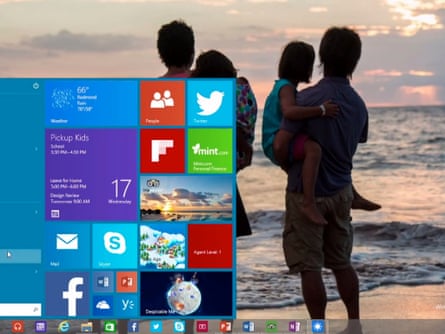
After complaints from users about its absence, the start menu is back. Clicking the start button brings up a menu, which – although isn’t exactly the same as Windows 7 or those before it – is more familiar than the full-screen tiled interface of Windows 8. This should be much more useful for desktop users, but the tiled interface from Windows 8 is tacked on to the side.
2 Continuum
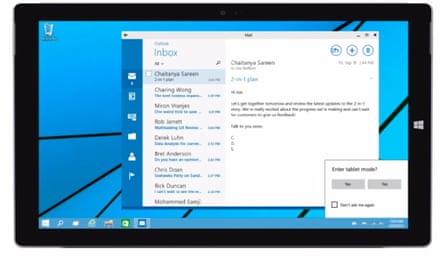
Windows 10 attempts to blend the best of Windows 7 with Windows 8. One of the smartest things Microsoft has added is Continuum, which detects the state of the computer and presents the right interface depending on whether a keyboard and mouse is being used or the screen is being touched.
For machines like the Surface Pro (which has a detachable keyboard), when the keyboard is attached it behaves like a desktop machine; without it, Windows switches to a more touch-friendly interface with an on-screen back button and other touch elements to make things a bit easier with fingers on a screen.
3 One Windows for all devices
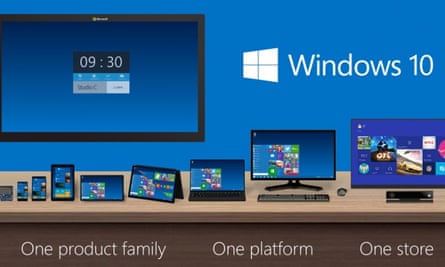
Microsoft has talked a lot about Windows being more than simply desktop computer software. Windows 10 is meant to unify desktop PCs, Windows tablets and Windows Phone smartphones with one interface, one way of operating and one account.
Apple has taken a similar route with its iCloud accounts and the upcoming Continuity feature between iPads, iPhones and Mac computers – although its iOS software on the iPhone and OS X on the desktop have been kept separate.
4 Universal apps
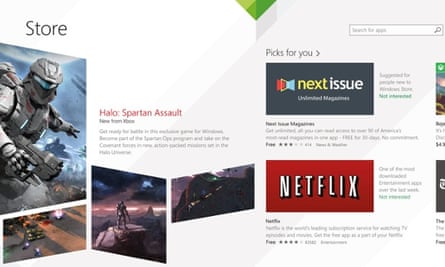
Along with the “one Windows for all devices” idea, Microsoft is pushing what it calls “universal Windows apps”, which is the new name for apps downloaded from the Windows Store. The idea is that one app will be able to run on all Windows platforms, including Windows Phone. Microsoft has been talking about this for over a year.
How it will work is not yet clear, but it is likely that new Windows apps will have a condensed version for Windows Phone and full-size versions for tablets and computers. Apple’s universal apps do something similar between the iPhone and iPad, but are not the same as the desktop OS X apps.
5 No more full-screen; universal apps can be windowed
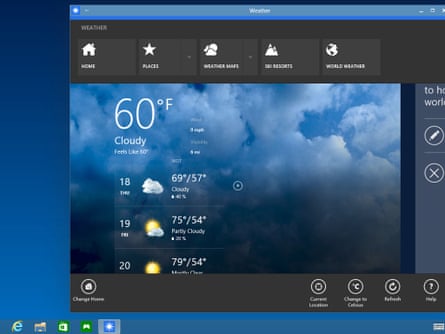
Bringing back the start menu has given the traditional Windows desktop more prominence again. To help merge the Windows 8-style “modern” apps from the Windows Store with the traditional desktop, Windows 10 can now run the newly renamed “universal apps” in windows on the desktop, as though they were any other desktop app.
6 Snap assist
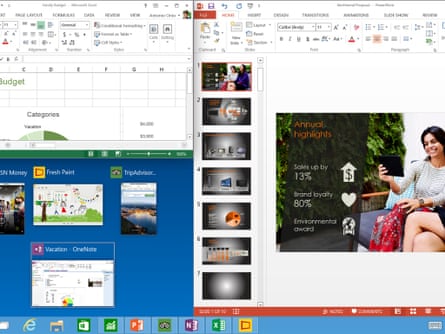
The snapping feature, which automatically resizes windows on the desktop to fill part or all of the screen, has been enhanced, allowing tiling of windows, snapping side-by-side and an array of new layouts to including virtual multi-desktop modes to try to help computer and tablet users be more productive with both universal apps and traditional desktop Windows apps.
7 What will it run on? Is Windows RT dead?

Windows 10 will run on most things that Windows 8 can run on. That includes almost any new PC bought in the last couple of years, but will exclude some older PCs, as Windows 8 requires a 64-bit processor.
Processors supporting 64-bit operation have been on sale from Intel and AMD since 2004, so most PCs still in operation will support 64-bit software.
The fate of ARM-based Windows tablets (that is, not running x86 processors) is unclear. Windows RT powers the Microsoft Surface and Surface 2, Nokia Lumia 2520 and the Dell XPS 10, among others. Microsoft has yet to announce whether Windows RT, which only runs on tablets powered by smartphone-class ARM processors, will be upgraded to Windows 10. A question about RT’s future wasn’t answered at the introduction on Tuesday.
8 When will it be available, and what will it cost?
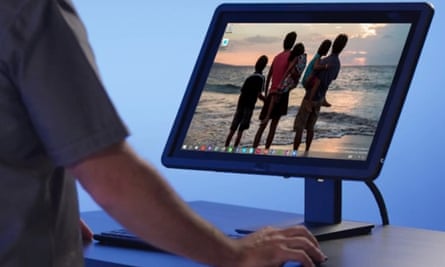
Microsoft showed off Windows 10 on Tuesday, but it won’t actually be available to users until 2015, after Microsoft’s developer conference in April called Build. Microsoft will be courting businesses before consumers, but Windows 10 is unlikely to appear in most businesses until the end of 2015 at the earliest.
Most consumers will buy Windows 10 with a new PC, but for those feeling adventurous and wanting to have a poke around Microsoft’s latest and greatest, the company is allowing users to sign up for early previews of the software still in testing.
It is recommended only for those that are happy to deal with and tech savvy enough to cope with buggy software and the potential for data loss, but those interested can check out the Windows Insider Program.
How much the final retail edition of Windows 10 will cost Microsoft hasn’t said. Windows 8.1 costs £100 from Microsoft, but a Windows 10 introductory discount is likely.
10 What’s in a number?
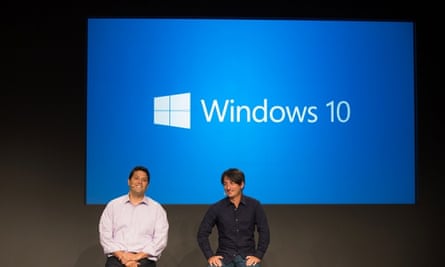
Yes, Microsoft did skip from Windows 8 (or 8.1 to be precise) straight to Windows 10.
What happened to Windows 9? Perhaps Microsoft has been using base 9, so 9 is 10. Or 10 just sounds better? The Xbox 360 (aka the Xbox 2) and its successor the Xbox One (aka the Xbox 3) are proof that Microsoft is happy to throw out conventional numbering when it feels like it.
Microsoft unveils Windows 10: ‘It wouldn’t be right to call it Windows 9’
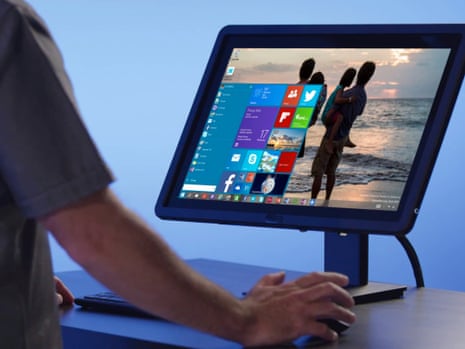









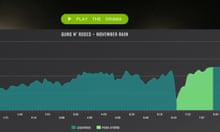
Comments (…)
Sign in or create your Guardian account to join the discussion